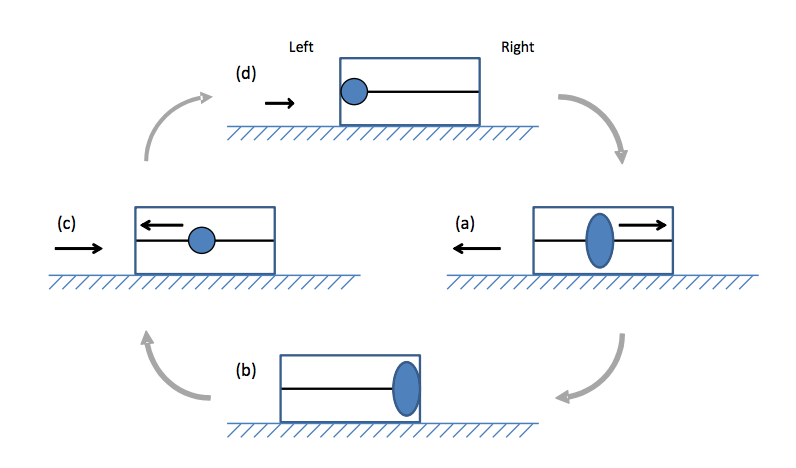Exploring Innovative Methods for Interstellar Travel
Written on
Chapter 1: The Concept of Interstellar Travel
Traveling the vast distances between stars remains one of the most daunting challenges in space exploration. Researchers are proposing novel methods that could make this ambitious goal a reality.

The Proposed ‘Helical Engine’
Achieving a speed sufficient to break free from our solar system and reach another star is no small feat. Traditional fuel sources can hinder a spacecraft's acceleration due to the mass they require. However, imagine if propulsion did not rely on conventional fuel at all.
David Burns, a researcher at NASA’s Marshall Space Flight Center in Alabama, has introduced a revolutionary concept for interstellar travel that eliminates the need for fuel. His approach involves capturing ions as the spacecraft navigates through space, then accelerating them in a loop to manage relativistic speeds. During a presentation in August 2019, Burns explained that oscillating the ions in the direction of travel could generate a small yet effective thrust.
The ions, when rebounding off the interior of a containment box at sub-light speeds, do not cause the box to move due to the principles of mass and momentum. However, factoring in relativistic effects could allow the box to shift slightly when the ions impact its walls with increased speed.

According to Einstein’s Special Theory of Relativity, objects moving close to the speed of light experience an increase in mass, theoretically reaching infinite mass at light speed. This mass increase in ions as they approach light speed contributes to the spacecraft's momentum, potentially allowing for a gradual increase in velocity over extensive distances.
Nonetheless, Burns acknowledges that his proposal is still in the theoretical stage and has yet to undergo rigorous peer review. The feasibility of his 'Helical Engine' faces skepticism as it challenges established principles in theoretical physics, particularly Newton’s third law of motion, which states that every action has an equal and opposite reaction.
A Potential Field Propulsion System
Takaaki Musha, a researcher from Shinshu University in Nagano, Japan, has also put forth an intriguing method for accelerating spacecraft across the cosmos. In his 2011 publication, he explored the implications of relativistic effects on space travel.
His concept leverages the fabric of space-time itself, where distortions create stress gradients that propel the spacecraft forward. In line with Einstein’s General Relativity, mass-induced bending of space-time explains gravitational forces.
To create this bending effect, Musha, in collaboration with Mario J. Pinheiro from the University of Lisbon, suggests utilizing superconducting coils to modify the surrounding field and generate a sort of 'gravity engine.' In their 2018 paper published in the International Journal of Sciences, they describe how an electromagnetic field created by these coils could establish a gravitational vortex.
“By pulsing the electromagnetic field generated by the superconducting coil, a strong co-gravitational field can be generated inside the toroidal structure,” (Musha and Pinheiro, 2018, p. 21). This can be visualized as a coil that flexes space and time, creating a bowl-like depression where the spacecraft can gain thrust.
While both Burns’ and Musha’s proposed methods draw from Einstein’s principles, they diverge significantly. Musha focuses on the momentum derived from interactions with external fields, while Burns emphasizes interactions between objects to produce thrust. This distinction is crucial, as Musha’s approach does not contradict Newton’s third law or conservation principles.
Realistic Alternatives
Critics often point out that theoretical approaches to interstellar travel have yet to be practically demonstrated. Even if they were validated experimentally, implementing these systems would likely come with a hefty price tag. This perspective reinforces the appeal of more pragmatic alternatives, such as solar sails and laser propulsion systems, as discussed by Tobias Häfner and colleagues in a January 2019 paper published in Astra Astronautica.
However, dismissing innovative concepts like 'gravity engines' and 'helical engines' too swiftly may be shortsighted. The monumental challenge of transporting humans to distant stars will emerge once uncrewed missions pave the way.
Investigating these theoretical methodologies and their feasibility is essential for our long-term vision of space exploration. Just as the advent of steam trains did not negate the pursuit of bullet trains, the exploration of solar sails for interstellar travel should not overshadow other potential propulsion methods. Ultimately, humanity's ability to set foot on exoplanets may hinge on these very innovations.
To delve deeper into future uncrewed spacecraft navigation, check out my related article.
Chapter 2: Understanding the Distances to Stars
The first video, "HOW To Measure The DISTANCES To The STARS," provides a fascinating overview of methods used to quantify the vast distances between celestial bodies.
In the second video, "How Far Are The Nearest Stars?" viewers can explore the proximity of our closest stellar neighbors and the implications for future travel.